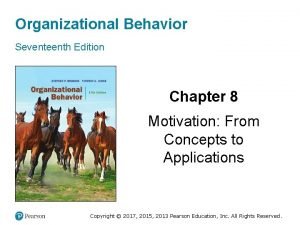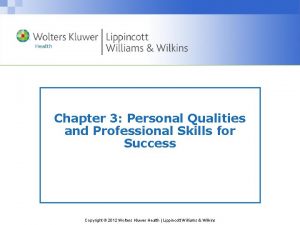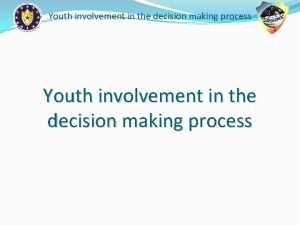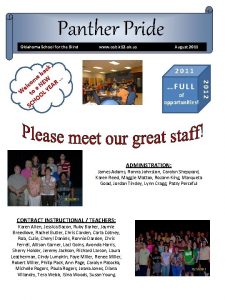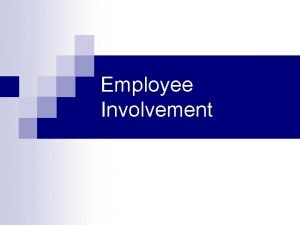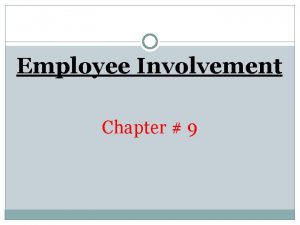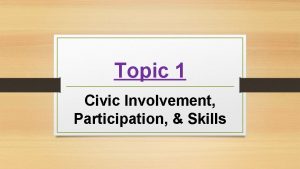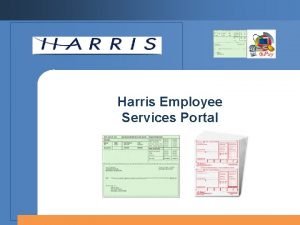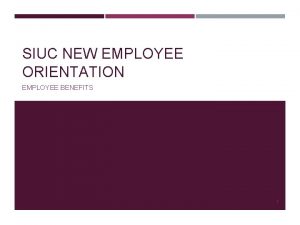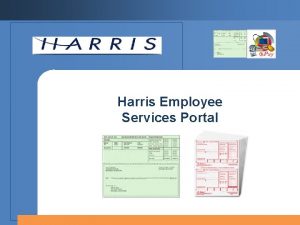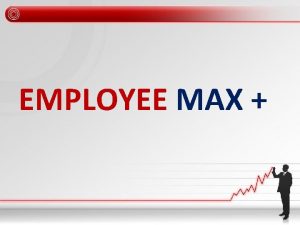UNIT 4 WORKER EMPLOYEE INVOLVEMENT AND PARTICIPATION Learning












- Slides: 12


UNIT 4 WORKER / EMPLOYEE INVOLVEMENT AND PARTICIPATION

Learning Outcomes After studying this unit, the student should: • Evaluate the underlying reasons for introducing worker participation • To analyse the various forms that employee participation in an organisation may assume • Determine what is required to ensure the success of employee involvement in the organisation • Analyse workplace forums and the law relating to them.

What is employee involvement? • Concept used to describe a set of practices aimed at improving the quality of life of employees in an organisation • Aims at increasing input of members in decision making that affect production.

Four key elements affecting employee involvement • Power-empower employees to make work related decisions • Information-employees to have enough information to make meaningful decisions • Knowledge and skills- organisation to provide training and development to improve skills • Rewards- to motivate; provide feelings of selfworthy and accomplishment (Performance bonuses)

Effects of employee involvement • Improved communication • Improved productivity • Improved capabilities • Improved coordination among departments Above primary effects Secondary effects below - Employees well-being and satisfaction - Attraction and retention - Improved productivity - Improved employee motivation

Employee Involvement Applications • Parallel Structures - Applied in bureaucratic organisations with ill defined and complex problems - Also referred to as ‘’collateral structures, ’’ ‘’dualistic structures, ’’ and ‘’shadow structures. ’’ - Provide members with alternative setting free from the formal organisational structure and culture to facilitate problem solving and change and act in new ways

Two types of parallel structures • Cooperative union – management projects and, • Quality circle intervention - Employees involved in above parallel structures make suggestions only and proposals only - Managers still make decisions - Managers make implementation decisions - Work well in organisations with no history of worker participation, endemic of top to down management approaches

Steps to be followed • Step 1: define purpose and scope • step 2: form steering committee • Step 3: Communicate with organisation members • Step 4: Create forums for employee problem solving • Step 5: Address the problem and issues • Step 6: Implement and evaluate the changes

TQM Focuses on process and quality improvement Increases knowledge and skills Provides relevant information to employees Pushes decision making downwards in organ. & ties rewards with performance • TQM aligned with overall business strategy • Attempts to make business focus towards continuous quality improvement • •

Deming –originator of TQM • Guidelines for effective application of TQM on page 79 • Steps of TQM page 80

High Involvement Organisations • Create organisational conditions that support high levels of employee participation • FEATURES /CHARACTERISTICS OF HIOs - Flat lean organisation structures - Job designs - Career systems - Open information systems - Selection - Training - Reward systems - Personnel policies - Physical layouts that support team structures and reduce status differences and promote equality among members
 Cardinality ratio constraint adalah :
Cardinality ratio constraint adalah : How can employee involvement measures motivate employees
How can employee involvement measures motivate employees How to become a family support worker
How to become a family support worker Employee attitudes and employee performance
Employee attitudes and employee performance 3 personal qualities
3 personal qualities Professionalism examples
Professionalism examples Cuadro comparativo de e-learning
Cuadro comparativo de e-learning Unit 10, unit 10 review tests, unit 10 general test
Unit 10, unit 10 review tests, unit 10 general test Involvement decision making
Involvement decision making Total member involvement pdf
Total member involvement pdf Panther involvement network
Panther involvement network Seven principle of social work
Seven principle of social work Panther involvement network
Panther involvement network

